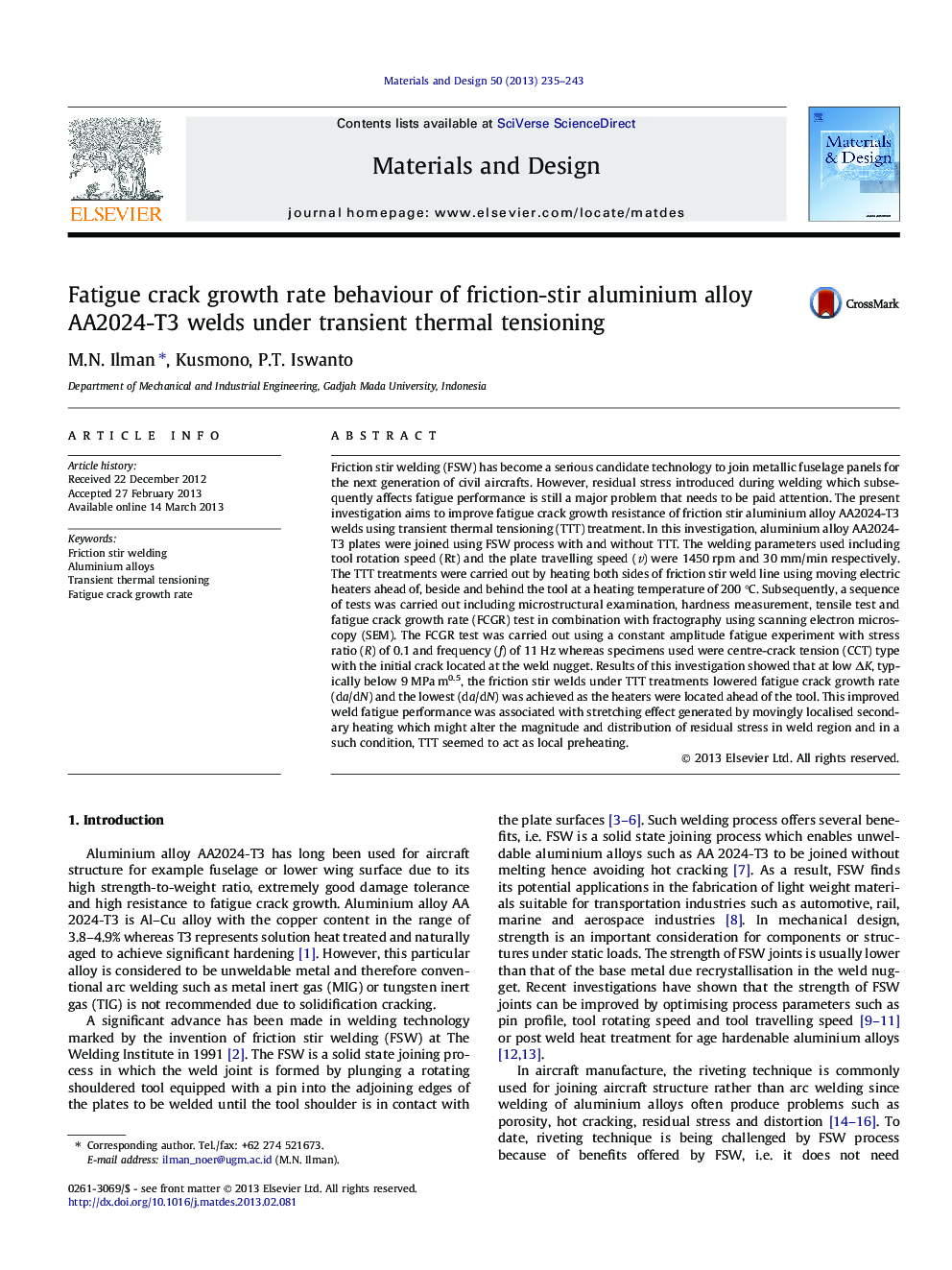| کد مقاله | کد نشریه | سال انتشار | مقاله انگلیسی | نسخه تمام متن |
|---|---|---|---|---|
| 829934 | 1470347 | 2013 | 9 صفحه PDF | دانلود رایگان |

• FSW enables unweldable aircraft material AA2024-T3 to be welded without cracking.
• FSW applied to aircraft structure is required to have superior fatigue resistance.
• Transient thermal tensioning (TTT) is being developed for stress relieving in FSW.
• The fatigue crack growth rates of FSW joints under TTT are studied.
Friction stir welding (FSW) has become a serious candidate technology to join metallic fuselage panels for the next generation of civil aircrafts. However, residual stress introduced during welding which subsequently affects fatigue performance is still a major problem that needs to be paid attention. The present investigation aims to improve fatigue crack growth resistance of friction stir aluminium alloy AA2024-T3 welds using transient thermal tensioning (TTT) treatment. In this investigation, aluminium alloy AA2024-T3 plates were joined using FSW process with and without TTT. The welding parameters used including tool rotation speed (Rt) and the plate travelling speed (v) were 1450 rpm and 30 mm/min respectively. The TTT treatments were carried out by heating both sides of friction stir weld line using moving electric heaters ahead of, beside and behind the tool at a heating temperature of 200 °C. Subsequently, a sequence of tests was carried out including microstructural examination, hardness measurement, tensile test and fatigue crack growth rate (FCGR) test in combination with fractography using scanning electron microscopy (SEM). The FCGR test was carried out using a constant amplitude fatigue experiment with stress ratio (R) of 0.1 and frequency (f) of 11 Hz whereas specimens used were centre-crack tension (CCT) type with the initial crack located at the weld nugget. Results of this investigation showed that at low ΔK, typically below 9 MPa m0.5, the friction stir welds under TTT treatments lowered fatigue crack growth rate (da/dN) and the lowest (da/dN) was achieved as the heaters were located ahead of the tool. This improved weld fatigue performance was associated with stretching effect generated by movingly localised secondary heating which might alter the magnitude and distribution of residual stress in weld region and in a such condition, TTT seemed to act as local preheating.
Journal: Materials & Design - Volume 50, September 2013, Pages 235–243